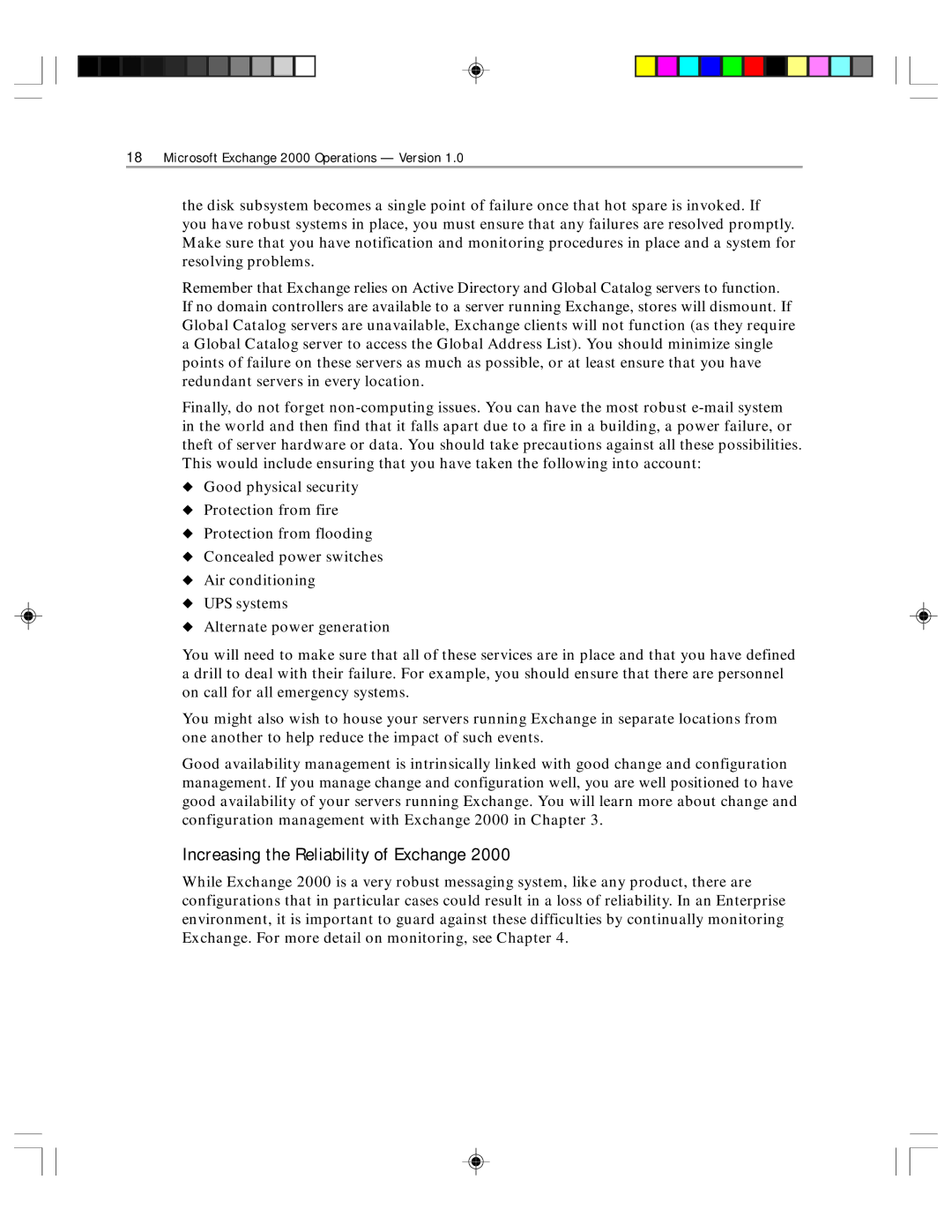
18Microsoft Exchange 2000 Operations — Version 1.0
the disk subsystem becomes a single point of failure once that hot spare is invoked. If
you have robust systems in place, you must ensure that any failures are resolved promptly. Make sure that you have notification and monitoring procedures in place and a system for resolving problems.
Remember that Exchange relies on Active Directory and Global Catalog servers to function. If no domain controllers are available to a server running Exchange, stores will dismount. If Global Catalog servers are unavailable, Exchange clients will not function (as they require a Global Catalog server to access the Global Address List). You should minimize single points of failure on these servers as much as possible, or at least ensure that you have redundant servers in every location.
Finally, do not forget
◆Good physical security
◆Protection from fire
◆Protection from flooding
◆Concealed power switches
◆Air conditioning
◆UPS systems
◆Alternate power generation
You will need to make sure that all of these services are in place and that you have defined a drill to deal with their failure. For example, you should ensure that there are personnel on call for all emergency systems.
You might also wish to house your servers running Exchange in separate locations from one another to help reduce the impact of such events.
Good availability management is intrinsically linked with good change and configuration management. If you manage change and configuration well, you are well positioned to have good availability of your servers running Exchange. You will learn more about change and configuration management with Exchange 2000 in Chapter 3.
Increasing the Reliability of Exchange 2000
While Exchange 2000 is a very robust messaging system, like any product, there are configurations that in particular cases could result in a loss of reliability. In an Enterprise environment, it is important to guard against these difficulties by continually monitoring Exchange. For more detail on monitoring, see Chapter 4.
